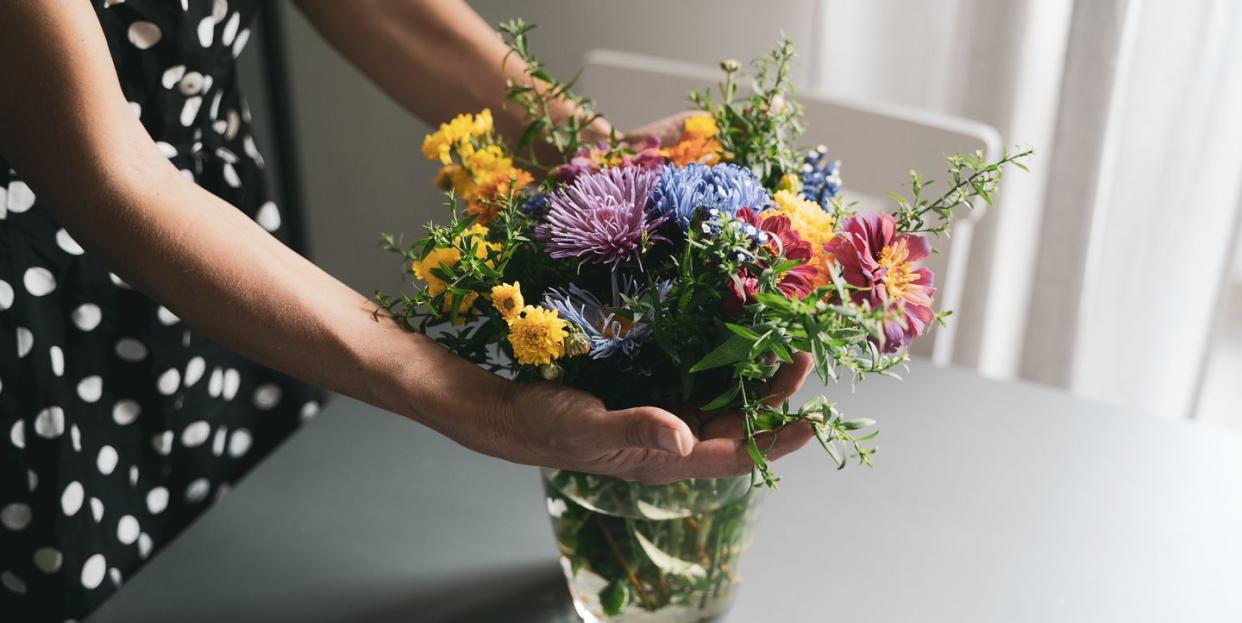Elevate your flower arranging with a flower frog

Have you ever wondered how florists and influencers make their flower arrangements look so picture-perfect? The answer isn’t their professional arrangement skills – it’s all thanks to a nifty gadget called a flower frog.
This can either be a discreet tool placed inside a vase that you don’t see which holds individual flowers in position, or it can be incorporated into the design, adding a visual element to your vase. The good news is that flower frogs are easy to make yourself. Once you’ve mastered how to make a flower frog, your home floristry displays will take on a whole new level of exquisiteness.
What is a flower frog?
A flower frog ensures a vase of flowers looks evenly displayed by keeping flowers upright and evenly spaced apart. The result is a floral arrangement that looks professional and appealing. Flower frogs are also known as frog pins or kenzans.
They were first used in Japan to help with ikebana, a formal type of Japanese flower arranging which looks almost architectural. Precision is key in ikebana and a flower frog is vital for a design to keep its structure.
But most people use flower frogs for ordinary arrangements at home.
How to use a flower frog
There are two main types of flower frog. One that goes at the bottom of a vase and one that sits at the top.
Flower frogs for the bottom of a vase
This type of flower frog is typically a circular tool made from different materials like metal, ceramics or plastic. Metal versions are similar to a jam jar lid. They have pins in them that sit upright which hold your stems in place. Y
You’ll need to affix it to the bottom of your vase or chosen vessel to keep it steady so it doesn’t move when water is poured into the vase. You can use a floral clay to do this. Similar designs can be made from plastic, but vintage ceramic ones, though rare to find, are often the most attractive.
To use this type of flower frog it’s easiest to start from the outside and work your way in, placing the individual stems. Flowers aren’t fixed permanently, so you can enjoy playing with your design and changing up the arrangement until you’re happy with it.
Flower frogs for the top of a vase
These are a type of lid that is placed on top of a vase, as demonstrated by this beautiful one made by @duyguturgok on Instagram. This lid has holes that allow individual stems to be positioned into each one.
Benefits of using a flower frog
The first thing you’ll notice is that your flower arranging will look and feel better. The reassurance that your flowers are secure also means you can travel with arrangements more easily if needed.
But one of the key benefits of using a flower frog is that it’s sustainable. Previously, foam was used to hold flowers in place, but this wasn’t so environmentally friendly. Frog flowers are reusable so once you’re finished with one display, give it a clean and then use it for your next one.
Flower frog inspiration
Here are some of our favourite flower frog crafts we’ve spotted made by crafters across the world – prepare to be inspired for your next flower frog make!
DIY jam jar flower frog
DIY lattice style flower frog
DIY mason jar flower frog
DIY net flower frog
DIY upcycled outdoor flower frog
How to make a clay flower frog
In this quick and easy tutorial we show you how to make a flower frog from air-dry clay that you can place on top of a jar or vase to get you started on flower frog making journey.
You will need
Pens of assorted thickness/straw
Air-dry clay glaze (optional)
Acrylic paints (optional)
How to make a flower frog
Start by softening some air-dry clay in your hand, creating a ball then rolling it out on your board, using the rolling pin. Sprinkle on some corn starch if it starts to stick. Roll out the clay until it’s around 1cm thick.
Place the top of your vase on the clay and gently use it to cut out a circle shape from the clay. The circle you’ve cut out should fit comfortably on your vase.
Make holes in the clay circle by pushing through pens. Using different pens will create holes of different sizes so you may want to try a biro and a felt pen.
Finally, leave your flower frog to dry. Leave is natural, or paint it in a colour of your choice. Then apply a glaze for extra protection and a smart finish.
WHY NOT TRY: swapping air-dry clay for polymer clay to create a colourful design. You could even experiment with blending and marbling colours together.
Will you be making a flower frog? Tag @primamag on Instagram so we can see yours!
You Might Also Like

